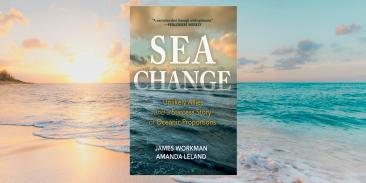Supreme Court Will Consider Decisions about Interstate Air Pollution Protections from Coal-Fired Power Plants
Action Could Undermine Long-Standing Precedent about Court Jurisdiction for EPA Challenges
(Washington, D.C. – October 21, 2024) Today, the Supreme Court agreed to review three cases that could affect EPA’s ability to protect people from air pollution.
Two of the cases – Oklahoma v. EPA (23-1067) and PacifiCorp v. EPA (23-1068) – are challenges to EPA’s disapproval of state air quality plans for failing to control the pollution that travels across borders and contributes to smog in downwind states. EPA’s action was the predicate for the Good Neighbor Plan, which the Supreme Court temporarily stayed in June pending full consideration of the merits. The challenges were brought by industry and allied states. The third, related case – EPA v. Calumet Shreveport Refining, LLC (23-1229) – involves EPA’s program for the blending of renewable fuels.
In all three cases, the issue is which court should hear challenges to our nation’s clean air laws.
“The litigation by PacifiCorp and its allies is the latest effort by large emitters to avoid modernizing pollution controls at power plant smokestacks,” said Vickie Patton, General Counsel for Environmental Defense Fund. “With these challenges, the coal plant owners are seeking to punch holes in the fabric of our nation’s clean air laws by opening the floodgates to disruptive litigation in courts across the nation. The Clean Air Act is clear that these challenges must be brought in the U.S. Court of Appeals for the D.C. Circuit – a choice made by Congress to promote stability in our nation’s clean air laws. At stake is whether we will have more pollution afflicting millions of people due to chaotic industry litigation. EDF opposes these efforts to destabilize our Congressionally created and long-established clean air protections.”
In section 307(b)(1) of the Clean Air Act, Congress deliberately instructed that challenges to any EPA actions that are “nationally applicable” or “based on [EPA’s] determination of nationwide scope or effect” must be reviewed by the U.S. Court of Appeals for the D.C. Circuit.
By centralizing review in the D.C. Circuit, Congress sought to ensure uniform judicial review of nationally important issues — and to avoid duplicative or piecemeal litigation, inconsistent rulings from different courts, and disorderly implementation of critical pollution-control programs.
Industry and allied states had filed numerous challenges to EPA’s disapproval of the state air pollution plans, in eight different courts of appeals across the country.
In February of this year, a unanimous panel of judges on the U.S Court of Appeals for the Tenth Circuit agreed with EPA’s determination that its disapproval of certain state air pollution plans was “nationally applicable” under the plain text of the Clean Air Act. The Tenth Circuit transferred petitions challenging those disapprovals to the D.C. Circuit.
Other courts, including the U.S Court of Appeals for the Fifth Circuit, have so far denied EPA requests to transfer other cases to the D.C. Circuit. No court has yet ruled on the merits of EPA’s disapproval actions.
“EDF believes the Tenth Circuit correctly found that the D.C. Circuit is the exclusive venue for challenges to EPA’s nationwide actions disapproving the state plans that failed to address interstate air pollution,” said Patton. “The agency’s disapprovals were grounded in multiple legal and technical determinations that have effects across the country and were applied with a uniform methodology to all affected states. That’s consistent with EPA’s duty to ensure that each state does its fair share to reduce interstate pollution and is precisely the sort of nationally important issues that Congress specified should be heard by the D.C. Circuit.”
With more than 3 million members, Environmental Defense Fund creates transformational solutions to the most serious environmental problems. To do so, EDF links science, economics, law, and innovative private-sector partnerships to turn solutions into action. edf.org
Media Contact
Latest press releases
-
Trump Administration Announces Unlawful Offshore Wind Halt
December 22, 2025 -
Governor Hochul Repeals "100-Foot Rule," Accelerating New York's Clean Energy Future
December 19, 2025 -
Colorado Air Regulators Approve Landfill Methane Standards
December 18, 2025 -
Proposal Would Guarantee Public Access to Air Quality Data
December 18, 2025 -
New Bill Will Help Keep Domestic Manufacturers Competitive
December 17, 2025 -
Satellite Data Shows Colorado Oil & Gas Methane Emissions Dropped as State Rules Took Effect
December 17, 2025











